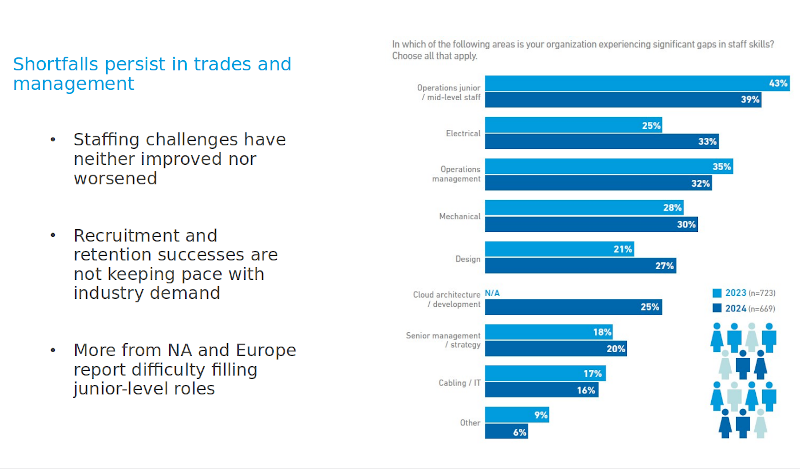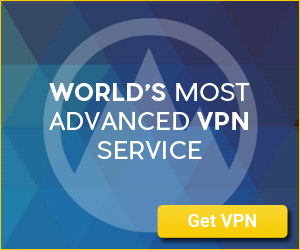Despite grappling with staffing shortfalls for years, one in five data centers have no women on staff.

The data center business as a whole has been struggling with staffing issues, and while the situation hasn’t been getting any worse, it hasn’t been getting any better either.
That’s not good, Uptime Institute’s CTO Chris Brown said on Wednesday. He called it a risk.
He was speaking at an hour-long online briefing on Uptime Institute’s Global Data Center Survey Results 2024. “Staffing” was the subheading that happened to be scheduled to be the last in line and time was running out. The subject would would get maybe four minutes. Stuff happens. That’s the way it sometimes goes at events such as this.
Brown managed to cram a lot of points into the time that was left and explain a lot of the reasons why the data center industry needs to figure out the staffing thing and get it solved.
“There’s always going to be risks in data centers, and the design of the operations of data centers is to mitigate that risk to an acceptable level — to a managable level,” he said. “Well, if you have inadequate staffing, that’s a risk to data centers.”
Brown didn’t mention that when just about any large data center is put at risk, national security is also put at risk, as is the economy, governments and all of their services, food supply, healthcare… there isn’t a single aspect of modern life that’s not in one way or another depending on the dependability of digital technology, which means depending on the dependability of data centers, where the hardware lives and the software resides.
There was no reason for Brown to explain this because his audience was all data center folks who already understand the data center’s importance.
What Brown did do in the couple of minutes that remained on the clock, was calmly and matter-of-factly explain why ongoing staffing issues put data centers at risk, and by implication why that’s an issue that maybe needs to be resolved.
What Being Understaffed Looks Like
“The first thing we’re seeing is some of our clients not being able to find staff to fully staff their data centers properly and to have people on site 24 hours a day seven days a week,” Brown said. “What that results in is you have people working longer hours, more hours, which means they’re more likely to make a mistake. They might be working alone in some instances, which means they don’t have someone backing them up to make sure they don’t make the mistake. You could have maintenance that’s deferred because you just don’t have the people at the time to do it.”

One of the ways that data center operators have been attempting to deal with staffing shortages, he said, is through an increasing use of automation.
“Which is fine because we know how to do it,” he said. “We’ve done it in years past, but they’re adding more remote monitoring and remote control to be able to monitor and control sites from a centralized location to maximize the staff that they do have.
“What that will do is add another threat vector for cypersecurity issues, because your critical equipment now needs to be connected to a network that’s connected to the outside world to be remotely monitored or remotely controlled. That’s going to give you another threat vector based on cybersecurity. Now, you have another headache, something else to worry about on your OT [operational technology] systems, but also it could bump your risk back up.”
The Problem With Women
Here’s an appalling statistic that I would hate to have to admit if I were a representative of the data center trade: one out of five data centers have no women employees in the roles of design, build, or operations — which means that unless they have a woman or two in the front office, or maybe sweeping or carrying out the trash, there might not be any women on staff at all.
“When we’re talking about staffing challenges and the inability to get a hold of new staffing pipelines, it does make one wonder, are all potential pools of operators and employees being utilized,” observed Doug Donnellan, an Uptime research analysist (and the event’s emcee), after offering up the statistic to the audience.
“Some efforts have been made, some formalized initiatives to hire more women and also other groups, but it may be too much of an early stage to be able to say that those efforts have yielded any significant results,” he added.
The clock ran out before we could hear about the “other groups” he mentioned.
Christine Hall has been a journalist since 1971. In 2001, she began writing a weekly consumer computer column and started covering Linux and FOSS in 2002 after making the switch to GNU/Linux. Follow her on Twitter: @BrideOfLinux



